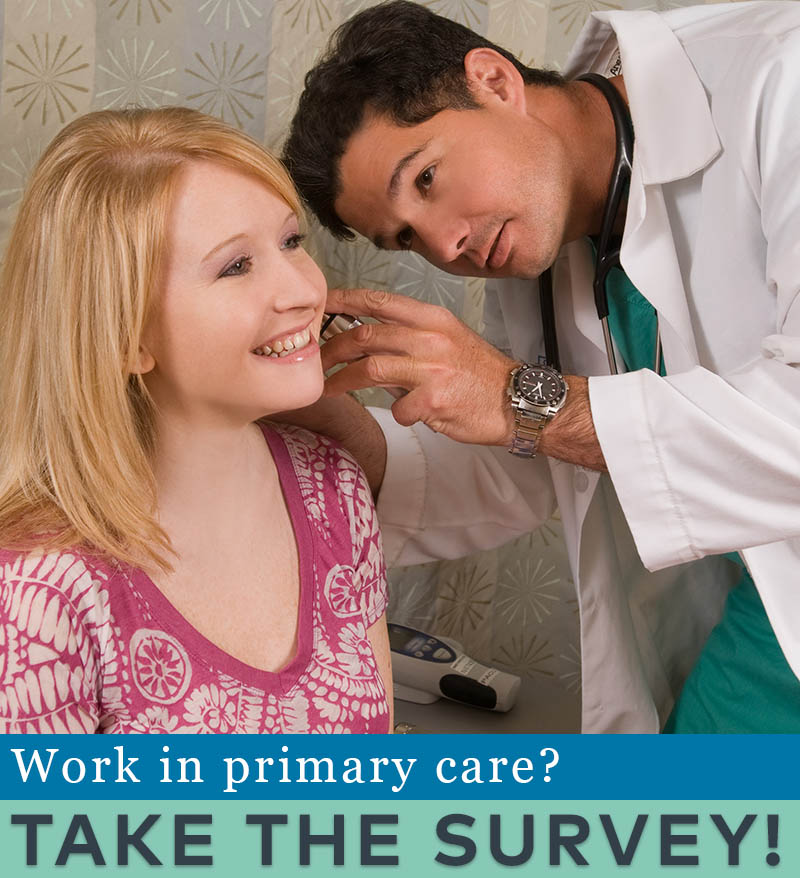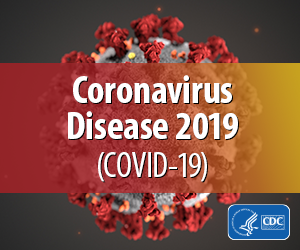You are looking at an archived version of our site. Please visit thepcc.org for a fresh, new experience!
You are here: Array » Primary Care & COV ...
Primary Care & COVID-19: Week 16 Survey
Check back weekly for the latest survey results and updates.
For data from the previous survey, see Week 15 Results.
Who replied to the survey in Week 16?
The Primary Care Collaborative is partnering with the Larry A. Green Center to regularly survey primary care clinicians and patients to better understand the impact of COVID-19 in real time.
Nearly 600 people from 46 states and Puerto Rico responded to the Week 16 survey of clinicians. 71% of respondents identify their practice as family medicine, 12% as internal medicine, 8% as pediatrics, 4% as geriatrics, and 5% as other. Settings include 21% rural, 14% community health centers, 11% in schools/offices, and 29% in designated patient-centered primary care homes. The breakdown of practice size and ownership has been remarkably consistent over the many weeks of the survey (even though the sample is different each time). 33% have 1-3 clinicians in the practice, 27% have 4-9 clinicians, and 39% have more than 10 clinicians. 39% are owned by a health system, 33% are self-owned, 12% are independent and large-group, and 4% are government-owned. 6% are convenience settings, and 5% are membership-based.
Results at a glance
As the pandemic protracts, so does the stress on clinicians.
Approaching the fifth month of COVID-19-related impacts on their practice, patients, personal and financial well-being, only 13% of clinicians report adapting to a “new normal.” When asked to describe their stress and the stress on their practice, 45% noted that “my ability to bounce back and adjust to adversity has become limited.” 38% say they are “maxed out with mental exhaustion.”
Fewer than 4 in 10 clinicians feel confident and safe with their access to PPE, while slightly more than 1 in 3 (36%) feels their lack of access to PPE feels unsafe, both because of reuse (20%) and scarcity (20%).
The COVID-19 surge, combined with confusing public messaging, has caused disruption in practices.
In the last 4 weeks, 1 in 5 clinicians had increased in-person visits, but are now limiting them again. 22% of clinicians’ salaries have been skipped or deferred, and 28% report furloughed staff returning to work.
Over half of respondents “continue to see the negative impact of deferred chronic care visits.” 42% say in-person volume is down, and 61% say they “were able to bill for the majority of work” they performed.
But clinicians are still finding ways to adapt and provide care.
Among the workflows that clinicians have adopted, liked, and would recommend to others are: changes in the patient flow to ensure physical distancing by physically re-arranging the office space, staggering appointment times, and encouraging televisits for appropriate visit types; prescreening patients; and mixing in-person and televisits.
Learn more: Download:
-
Series 16 Clinician Survey Executive Summary (includes select open-ended answers to survey questions)
Voices from the Primary Care Front Lines
What have you done to make your practice work for staff and patients?
Brief (30-120 second) outreach/education videos on website & social media. (Colorado)
Removing most of the chairs in our waiting room. (Delaware)
Incorporated specialists into visits, made possible because we are on Zoom. (Georgia)
Separate well visits from sick at specific times to encourage patients to get their well visits. (Maryland)
Describe the stress on your practice at this point in the pandemic.
The "I can do 4-6 weeks of this" transition to "this feels like a new/permanent normal" is crushing and demoralizing. Ways to build morale when everyone is at a computer workstation away from other staff (and patients) feels impossible. (Ohio)
I am seeing a counselor regularly, and clearly have compassion fatigue. Pain from the daily treadmill, crying because of the broken system locally and fractured national disaster, knowing how different it could be. (Virginia)
March-June the stress level was constant and severe. I had a physical and emotional meltdown in June and had to take a week off. Emotional exhaustion has also been affected by a physician colleague's suicide in May. (Oregon)
Very challenging. It is so difficult to educate patients on prevention of spread when government officials contradict us. It seems, at times, like a hopeless mess. I will continue to try to educate my patients and anyone who will listen though. (Illinois)
More support from private insurers is critically needed.
Fight for telemed to stay reimbursed after pandemic. It has helped us improve chronic care for our diabetes especially. (Texas)
My biggest fear is the financial impact. I am hoping we can make it thru the next few months and not have to close. (New Mexico)
Increased costs for PPE but no increase in reimbursement. Other groups like dentists can charge insurance companies and patients to make up the cost. Seems like should get some additional funding from insurance companies. (New Jersey)
| Allegato | Dimensione |
|---|---|
| 723.47 KB | |
| 724.92 KB |

Are you a physician, nurse practitioner, or PA working in primary care?
Help PCC and the Larry A. Green Center track how your practice is responding to the COVID-19 outbreak by completing the Green Center's occasional survey.
The regular surveys are no longer being conducted.
COVID-19 Updates
Maggio 9, 2022 | Primary Care Collaborative
Aprile 19, 2022 | Primary Care Collaborative
Aprile 19, 2022 | Primary Care Collaborative
Marzo 7, 2022 | STAT
Febbraio 27, 2022
- 1 di 39
- seguente ›

Recent News
Agosto 16, 2024
Agosto 12, 2024
Luglio 16, 2024
Giugno 24, 2024
May webinar highlights: “The Commercial Market: Alternative Payment Models for Primary Care” Nate Murray explains w… https://t.co/KX9Wi2w6oY —
2 anni 5 mesi fa
@CMSinnovates’ primary care strategy is rooted in a 2021 @theNASEM’s report which called #primarycare “foundational… https://t.co/glbPxvCysg —
2 anni 5 mesi fa
@CMSinnovates has a new #primarycare strategy, envisioning “ACO-based primary care model tests that may focus on pr… https://t.co/aJGF1z411l —
2 anni 5 mesi fa
- Page 1
- ››
Menu secondario
Copyright © 2024 Primary Care Collaborative





